class: center, middle .logo[] _January 29th, 2018_ # Gitlab **Fiore Basile** [fiore.basile@gmail.com](mailto:fiore.basile@gmail.com) .logo_tiny[  ] --- ## What is Gitlab? Integrated platform for software* development .tall-img[] <small>(*) Not only software, also websites, documentation, etc</small> --- ## What is FabCloud <div style="float: right"> <img src="images/fabcloud.png" style="width: 200px"> </div> Online services for the Fab Lab Network Goals: - Collect all projects in a single place - Host the Fab Lab Network's websites - Provide a tool for collaboration and communication between labs - Any lab and individual can use it for projects and websites also outside Fab Academy - Register new accounts using [fablabs.io](http://fablabs.io) Go to https://gitlab.fabcloud.org to find our own installation of Gitlab. --- .small-img[ 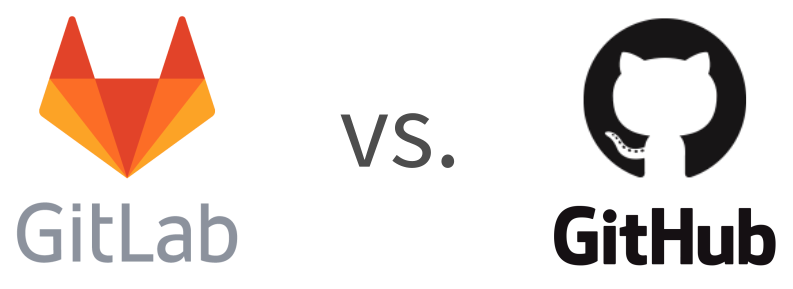 ] Gitlab is like Github, they offer similar features, but: - **Gitlab is open source** -> it's possible to self-host it on our own server - Github is **free for public projects**, but you need to **pay for private** projects - Gitlab provides built-in **Continuous Integration**, more about it later - **Github has a huge community of users**, useful for publicity - You can **install Gitlab on any Linux computer** using [OmniBus](https://docs.gitlab.com/omnibus/README.html) or [Docker](https://hub.docker.com/r/gitlab/gitlab-ce/) - We host it in the [cloud](images/nocloud.jpg) on [Amazon EC2](https://aws.amazon.com/it/ec2/) on a [t2.xlarge](https://aws.amazon.com/it/ec2/instance-types/) --- ## Gitlab & FabAcademy We use GitLab for all the content related to Fab Academy. So you should **learn how to use it**. #### What we do with Gitlab 1. Keep all student files under [version control](http://fabacademy.org/2018/recitations/version-control.html) 1. Track groups of students, labs, instructors and staff 1. Publish the FabAcademy [site](http://fabacademy.org/2018) 1. Publish and host [lab](http://fabacademy.org/2018/labs.html) and [student](http://fabacademy.org/2018/students.html) pages 1. Publish documents like the [Fab Academy Handbook](http://fabacademy.org/2018/docs/FabAcademy-Handbook/) 1. Track what needs to be [done](https://gitlab.fabcloud.org/academany/fabacademy/2018/staff/issues) and communicate using Issue trackers 1. Take meeting notes using [Markdown](https://docs.gitlab.com/ee/user/markdown.html), see this [example](https://gitlab.com/gitlab-org/gitlab-ce/blob/master/doc/user/markdown.md) 1. Build sites and documentation using [static site generators](http://www.staticgen.com) --- ## Getting started Setup you profile <div style="width: 100px; float: right; margin-right: 150px; margin-top: -100px"> <img src="images/settings.png"> </div> - Login to Gitlab, click on the upper right icon and Settings - You can add a secondary email address - You can set your [avatar image](http://gravatar.com) and add some more info about you #### WARNING: Don't change your username or email, or bad things will happen --- ## Notifications settings **Mandatory, or you won't receive important messages from the class** Click on Notifications and set it to **Watch** .bordered[  ] - You can also setup notifications _selectively_ in each project's dashboard - Check the _Receive notifications about your own activity_ flag to confirm you receive notifications, then open a ticket to yourself --- ## SSH Keys **Mandatory, or you won't able to push your website**. SSH Keys allow you to use the GIT repository securely, without requiring a password every time. #### Generate your [SSH Key](https://docs.gitlab.com/ce/ssh/README.html#generating-a-new-ssh-key-pair) - Linux and MacOS ```terminal ssh-keygen -t rsa -C "your.email@example.com" -b 4096 ``` - Windows [Using PuttyGEN](https://the.earth.li/~sgtatham/putty/0.67/htmldoc/Chapter8.html#pubkey-puttygen) --- ### Add the public key to your authorized keys .full-width[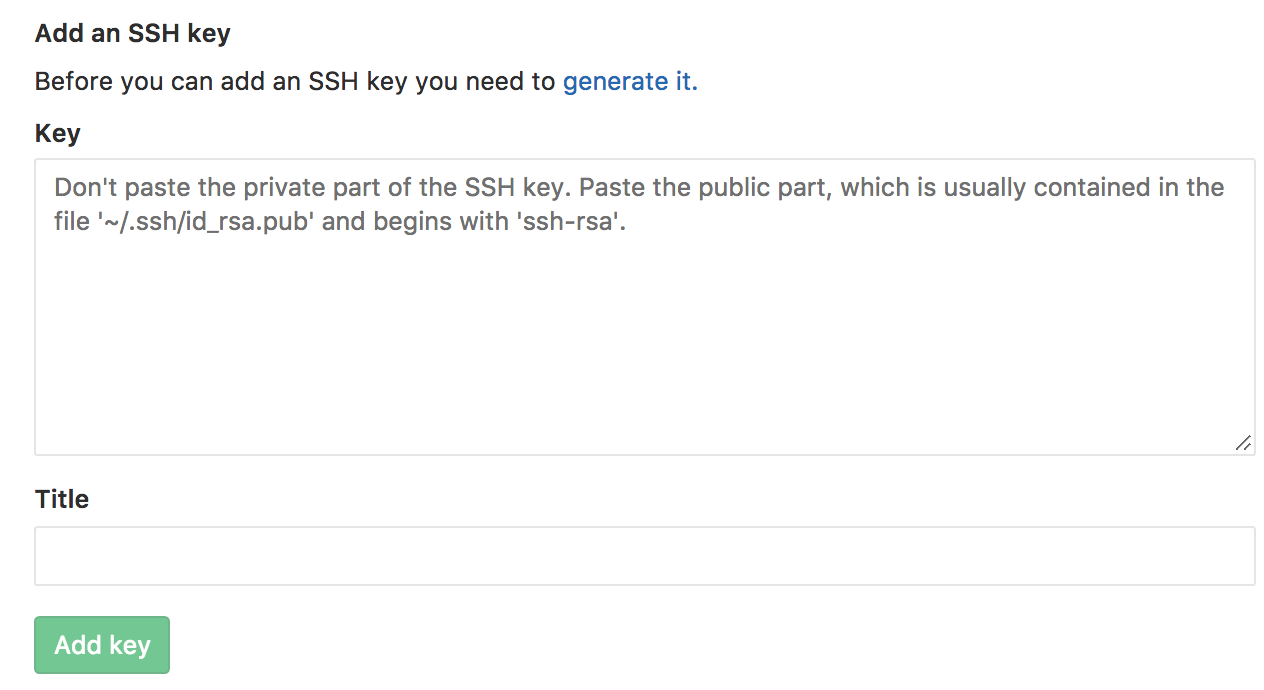] --- ## Preferences - You can change Theme - You can change Synthax hilighting colors .small-img[] --- ## Version control - Gitlab uses [GIT](http://git-scm.org) - Allows to create projects - Each project is a GIT Repository - You can have [personal projects](https://gitlab.fabcloud.org/dashboard/projects) and shared projects - You can _star_ projects to find them easily - You also have access to your *group's* projects --- ## Edit your website - Web interface - Cloning with SSH - Pushing with SSH --- ### Web interface - Navigate to [https://gitlab.fabcloud.org/dashboard/projects](https://gitlab.fabcloud.org/dashboard/projects) - Look for the project with your *username* and click on it - Good idea to add a **star** to it .center[] --- .center[.full-width[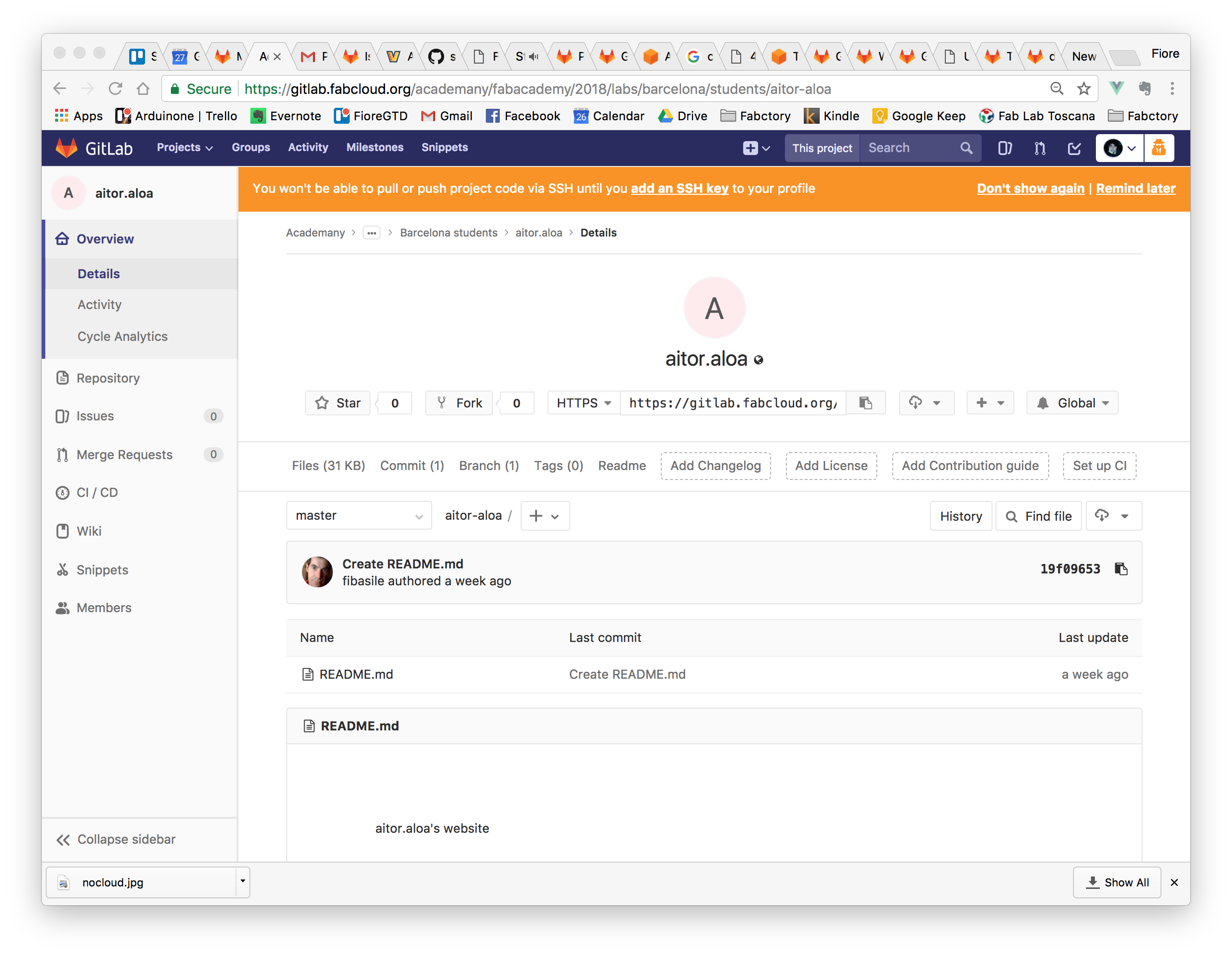]] [Example student](https://gitlab.fabcloud.org/academany/fabacademy/2018/labs/barcelona/students/student-name) --- ### Cloning with SSH **Make sure you added your SSH key and set correct permissions** Copy the repository URL from the web interface  **Make sure SSH is selected** Open a terminal ```terminal git clone git@gitlab.fabcloud.org:academany/fabacademy/2018/labs/b.... ``` If you followed a [GIT Tutorial](https://git-scm.com/book/en/v2) you know what to do from here. --- ## Groups and projects - Groups and subgroups allow to organize people and projects into a hierarchy - Users are member of groups - Groups have access to projects with Developer or Master _roles_ .center[.tall-img[]] --- .full-width[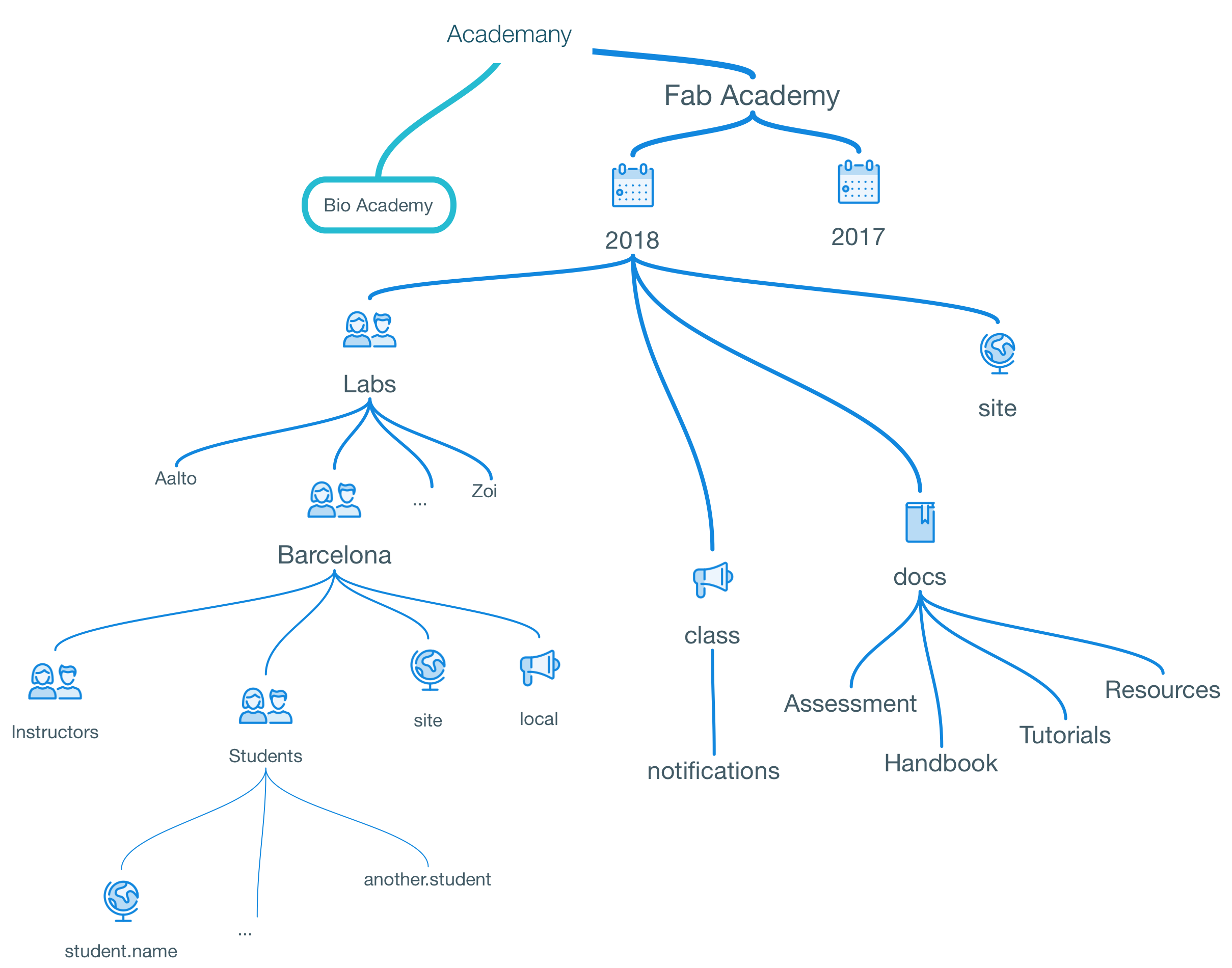] --- ### Instructors - You are members of the following groups: ```terminal Academany > Fab Academy > 2018 > Your Lab > Your Lab Instructor Groups ``` - You have access to the: ```terminal - Academany > Fab Academy > 2018 > staff - Academany > Fab Academy > 2018 > class - Academany > Fab Academy > 2018 > Your Lab > site - Academany > Fab Academy > 2018 > Your Lab > local ``` --- ### Students - You are members of the following groups: ```terminal Academany > Fab Academy > 2018 > Your Lab > Your Lab Students Groups ``` - You have access to the: ```terminal Academany > Fab Academy > 2018 > class Academany > Fab Academy > 2018 > Your Lab > students > * ``` --- ## Issue trackers - Gitlab allows to track todo items using Issue trackers - For each project you have access to, you can browse and create issues: .center[.full-width[]] --- ## Using issues - Communicate with the class / Replacing emails - Track your personal tasks (in your projects) - Use them as kanban boards - Assign issues to milestones .center[.full-width[]] --- ## Issues vs Email - **Threaded conversations**, so you can catch up quickly and find discussions easily - **Reply using issues**. Click on the **link in the footer** of the email! - **No spam.** Keep the conversation relevant - Everybody will still receive email notifications, **use with care** - **Close issues **when they are complete --- ## Kanban boards - You can use issues for creating Kanban boards, similar to [Trello](http://trello.com) - [Kanban](https://en.wikipedia.org/wiki/Kanban_board) was invented by Toyota for car manufacturing - Kanban boards show how work progresses i.e. from todo, to doing, to done - Click on boards to see your issues as a Kanban board - Good way to track your assignments, project tasks, or personal errands --- ## Milestones Another way to organize your work, is to group issues into [Milestones](https://en.wikipedia.org/wiki/Milestone_(project_management)) - Each **milestone** represents an **important step** in your project - **Assign issues to a Milestone**, when all are completed you reached your Milestone - Easy to distinguish more urgent work from what can be done later - You can assign **start and end dates** to each milesone - Milestone help spiral development, and meeting deadlines! --- ## Website Publishing Using gitlab you can publish content that will be served via Web. - Your student website, find the link in the [students list](http://fabacademy.org/2018/students.html) - Your personal website, create a project named `<username>.fabcloud.io`, and browse it ```terminal http://<username>.fabcloud.io ``` - Any other personal project, the address will be ```terminal http://<username>.fabcloud.io/<project_name> ``` --- ## How to publish your website Publishing your website is done using [Gitlab CI](https://docs.gitlab.com/ee/ci/quick_start/) 1. You create a [gitlab-ci.yml](https://gitlab.fabcloud.org/academany/fabacademy/2018/labs/barcelona/students/student-name/blob/master/.gitlab-ci.yml) file of type HTML 2. You upload a [static webpage](https://en.wikipedia.org/wiki/Static_web_page) 3. Every time you update any file in your projects (using git or the web interface) your website will be updated* (*) updates are almost immediate, but not realtime --- ## GitLab CI You can do much more with GitLab CI. CI stands for [Continuous Integration](https://en.wikipedia.org/wiki/Continuous_integration) a common practice of software development. What this is capable of: - Compile websites with static site generators - Create books using Gitbook - Test software - Resize images - ...much more --- ## How does it work? - Using [Docker](https://www.docker.com/) - GitLab CI allows to start a virtual server - install software on it - and execute it for performing one or more tasks - storing results and publishing them on the web This process is described by the **gitlab-ci.yml** file you create into a folder --- ## Build process .center[.full-width[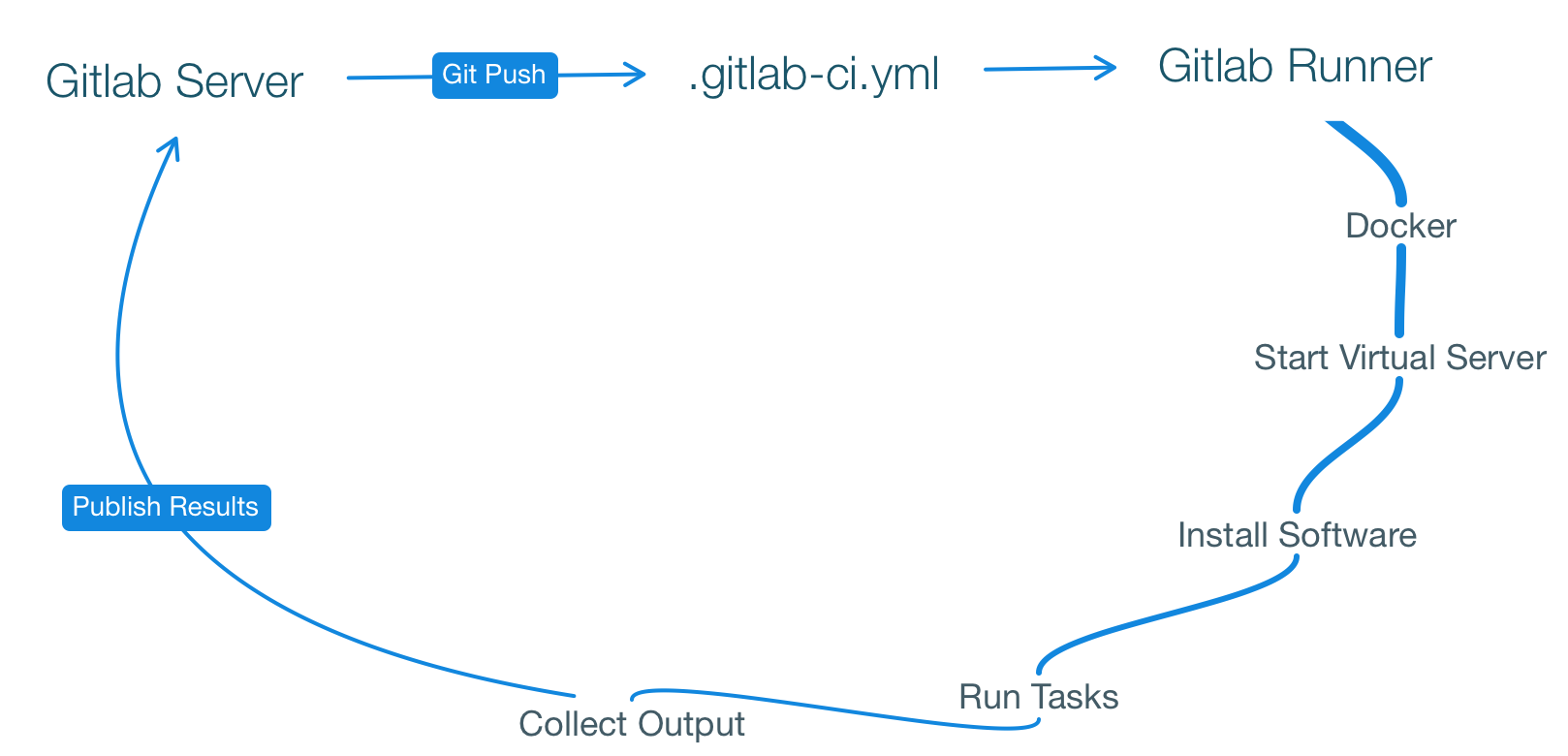]] --- ## Pipelines Each time this happen we are running a **Pipeline** on a **Runner** .center[.full-width[]] You can monitor pipelines in the [Gitlab CI Menu](https://gitlab.fabcloud.org/academany/fabacademy/2018/labs/barcelona/students/student-name/pipelines) --- ## Building websites Using Gitlab CI you can make your website using a [static site generator](http://staticgen.com) For example [Jekyll](http://jekyllrb.com). 1. Install [RubyGems](https://rubygems.org/pages/download) 2. Run the following ```terminal $ gem install jekyll bundler $ jekyll new mysite $ cd mysite $ jekyll serve ``` then browse to http://localhost:4000 3. Add your repository as remote, and push the content of _mysite_ to gitlab 4. Create [a .gitlab-ci.yml using the Jekyll template](https://docs.gitlab.com/ee/user/project/pages/getting_started_part_four.html) --- ## .gitlab-ci.yml for jekyll ```yaml image: ruby:2.3. ## use docker ruby version 2.3 image variables: JEKYLL_ENV: production ## tell jekyll to make a production build cache: paths: ## keep a cache of vendor/ - vendor/ ## path for faster build before_script: - bundle install --path vendor ## install jekyll and deps in vendor pages: script: - bundle exec jekyll build -d public ## run jekyll with output in public/ artifacts: paths: - public ## keep and store the results in public/ only: - master ## work only on master branch ``` NOTE: Don't copy text after #, this is a comment --- ## Building documentation Another common use of Gitlab-CI is to build documents using Markdown, thanks to the [Gitbook Toolchain](https://toolchain.gitbook.com/). Gitbook allows to generate: - A **web-ready** version of your book - A **PDF** version - A **mobi/epub** version for e-book readers All from the same source files. --- ## How to create a gitbook 1. Create a new project / repository i.e. `my-book-project` 2. Install [Gitbook CLI](https://toolchain.gitbook.com/) ```terminal $ npm install -g gitbook-cli ``` 3. Setup an empty book using the terminal ```terminal $ mkdir my-book-project $ cd my-book-project $ gitbook init Installing GitBook 3.2.3 ... ``` 4. Edit your book - Edit the contents of `README.md`, the book's cover page - Create new files in [Gitbook Markdown](https://toolchain.gitbook.com/syntax/markdown.html) - And add a link to them into the `SUMMARY.md`, the book's index --- ## How to build a gitbook 4. Test your book using ```terminal $ gitbook build ``` and opening the generated `index.html` in the `_book/` folder 5. Add a `.gitignore` file containing `_book/` into your folder, so you commit just the source 6. Push the folder in Gitlab, and add the Gitbook [.gitlab-ci.yml](https://gitlab.fabcloud.org/academany/fabacademy/2018/docs/FabAcademy-Handbook/blob/master/.gitlab-ci.yml) 7. Browse your generated gitbook at `http://<youruser>.fabcloud.io/my-book-project` 8. Download the PDF version of your book `http://<youruser>.fabcloud.io/my-book-project/book.pdf` --- ## Fab Academy gitbooks - [Fab Academy Handbook](http://fabacademy.org/2018/docs/FabAcademy-Handbook/) - [Fab Academy Assessment](http://fabacademy.org/2018/docs/FabAcademy-Assessment/) - [Fab Academy Tutorials](http://fabacademy.org/2018/docs/FabAcademy-Tutorials/) - [Fab Academy Resources](http://fabacademy.org/2018/docs/FabAcademany-Resources/) Browse the [repository](https://gitlab.fabcloud.org/academany/fabacademy/2018/docs/FabAcademy-Handbook) and [.gitlab-ci.yml](https://gitlab.fabcloud.org/academany/fabacademy/2018/docs/FabAcademy-Handbook/blob/master/.gitlab-ci.yml) file for an example --- ## Wikis - Gitlab also provides a [Wiki](https://en.wikipedia.org/wiki/Wiki) for each project - Wikis are a good way to write the documentation for a software or hardware project - Wikis use Markdown, but allow for easy [hyperlinking](https://gitlab.fabcloud.org/help/user/markdown#wiki-specific-markdown) - To create a new page, add a link: ``` [Title](pagename) ``` Save and click on it. We expect you to learn HTML and publish a basic side, but for example a good idea is to keep your notes during class on a wiki in your personal website. --- ## Gitlab API Gitlab offers a [rich API](https://docs.gitlab.com/ee/api/README.html) (application programming interface) for accessing most of the features available via GUI. **What you can do with the API?** - Query your groups and projects - Upload / Edit files - Open issues - Check your repo size - Start CI jobs - ... almost anything you can do with the GUI --- ## Using the API - Get your [Personal API Token](https://docs.gitlab.com/ee/user/profile/personal_access_tokens.html) - Pass it to API calls ```terminal curl --header "Private-Token: SpdRM-dN4xsCGGrcZQRR" \ https://gitlab.fabcloud.org/api/v4/projects ``` You will get a JSON ```json [ { "id": 713, "description": "", "name": "my-great-project", "name_with_namespace": "fibasile / my-great-project", "path": "my-great-project", ... ``` --- ## Access API from Python Install the [Python API Wrapper](https://github.com/python-gitlab/python-gitlab) ```python import gitlab gl = gitlab.Gitlab('https://gitlab.fabcloud.org', private_token='SpdRM-dN4xsCGGrcZQRR') # list all the projects projects = gl.projects.list() for project in projects: print(project) # list all project issues issues = project.issues.list() # Filter using the state, labels and milestone parameters issues = project.issues.list(milestone='1.0', state='opened') # Order using the order_by and sort parameters issues = project.issues.list(order_by='created_at', sort='desc') ``` Check the [Docs](https://docs.gitlab.com/ee/api/README.html) for more examples --- # References - [Gitlab Documentation](https://docs.gitlab.com/) - [Gitlab Markdown](https://docs.gitlab.com/ee/user/markdown.html) - [Gitlab API Docs](https://docs.gitlab.com/ee/api/README.html) - [Python API wrapper Docs](http://python-gitlab.readthedocs.io/en/stable/) - [Gitlab CI](https://docs.gitlab.com/ee/ci/yaml/README.html)